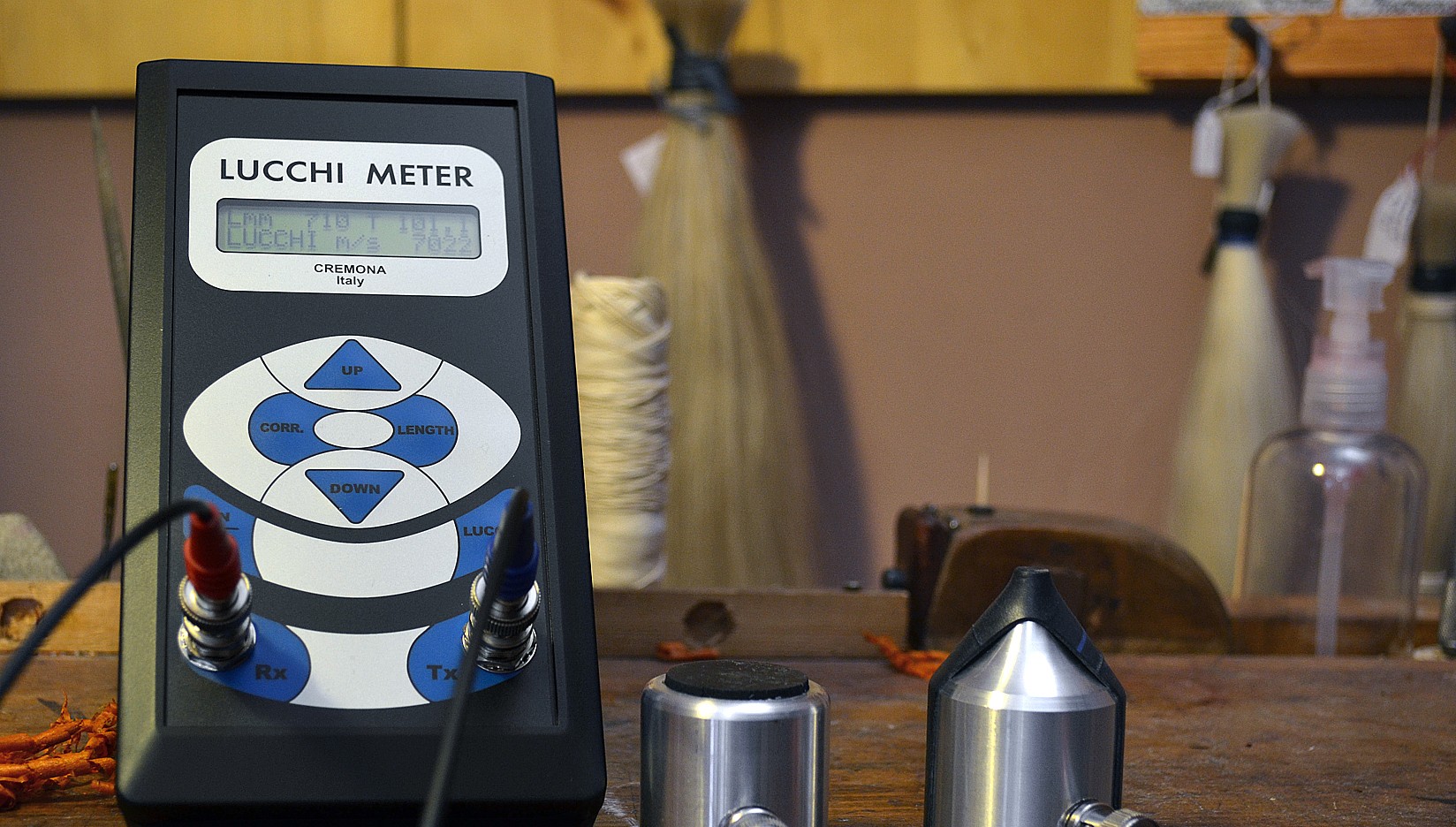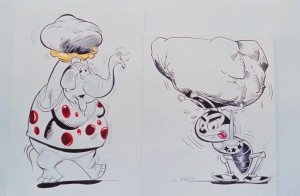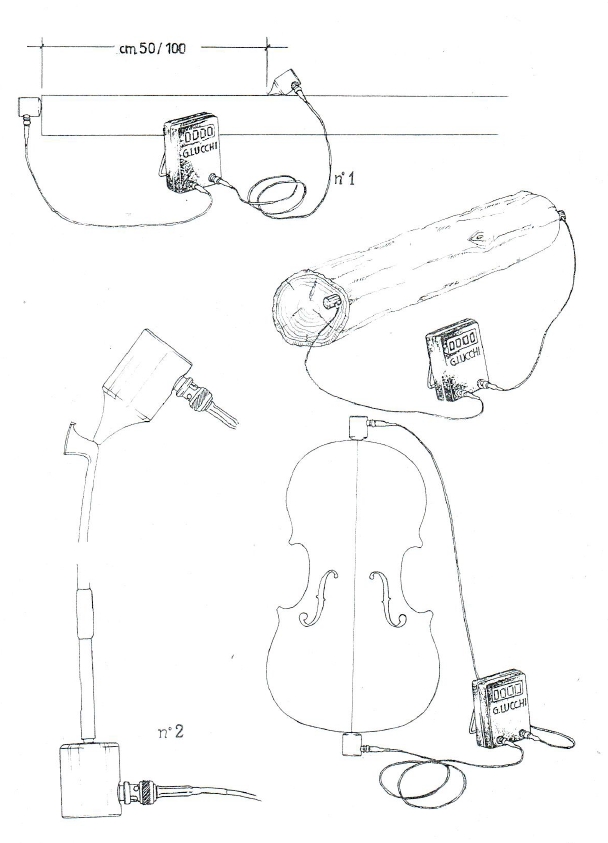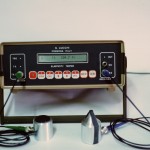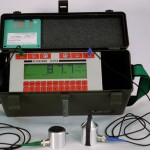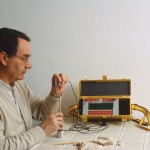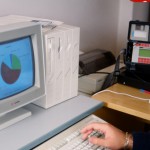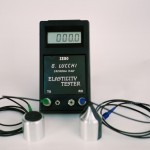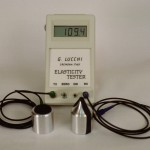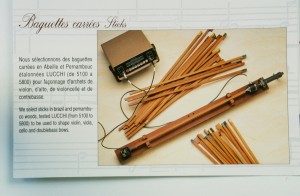From the Autobiography “Bowmaking Passion of a Lifetime”
by Giovanni Lucchi inventor of LucchiMeter
The necessity
“I often happened to be working on two sticks that, when first examined, appeared to share the same characteristics, but ended up as bows with completely different qualities. This was the eternal dilemma – how to choose the most suitable wood.
They say that the famous violin makers of the past made great progress by noting that the speed with which wood propagated sound was a fundamental element in checking the quality of the sound.
For me, the only possible solution in those days was to travel all over Brazil with a friend and his son who lived there, or to go with Massimo to Germany, where wood was shipped to the big importers. We chose the wood that seemed the most promising and we bought small logs. However we could only discover afterwards whether or not we had made a good buy. How often we were wrong
not we had made a good buy. How often we were wrong
and how much wood we had to throw away…
As time passed, I became more and more convinced that there must be a method, some scientific way of establishing
with certainty, whether a trunk or a board could become a light and powerful bow.
A violin-maker may produce the most beautiful violin in the world, a bow maker the most beautiful bow, but, if by any chance the wood is not exactly as it should be, neither is of any use.
Over and over again, I kept repeating to myself that there must be an objective method for measuring the quality of wood beforehand, before you start to work on it.
This idea took possession of me. I was not able to think of anything else. Call it an obsession, determination or a passion, the fact was that it completely absorbed me.
I could no longer bear to think that days and nights of work were cancelled, that they melted away like snow in the sunshine, that the perfect curves worked on for hours produced nothing when they came up against the opacity of a ‘deaf’ bow. Even wood is wrapped in a mantle that hides its real mechanical-acoustic structure. We cannot remove it, we can only try to
guess what is hidden beneath it.”
“I had started investigating with a very common instrument, one of those small folding lenses dressmakers use to count the threads in the yarn of a fabric.
I used to count the pores in the wood in order to pick out the heaviest and most compact.
The more pores there were, the lighter the wood and hence, in our opinion, the more the wood was to be considered mediocre. We thought that quality lay in the absolute weight, but we were way off the mark. As always, the truth lies in the relationship between different factors, not in one factor on its own. Is an elephant necessarily stronger than a little ant?
It depends.
My use of the lens was an empirical method, but it reveals how urgently I needed to find a new way.
Massimo (Giovanni Lucchi’s son) and I spent hours and hours wrestling with an endless series of experiments.
We used a simple weighing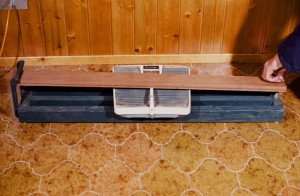 scale screwed with a square block onto a frame. There we put the pieces of wood to be weigh
scale screwed with a square block onto a frame. There we put the pieces of wood to be weigh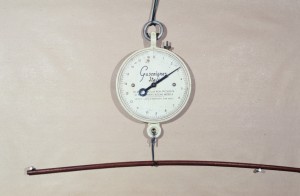 ed. Once the wood was in place, we noted the weight of each one and chose the heaviest.
ed. Once the wood was in place, we noted the weight of each one and chose the heaviest.
We were under the illusion that the heaviest was the best. Apart from the fact that this gave us no indication regarding the thickness of each piece, a crucial variable, we were persistently pursuing the wrong value. We were concentrating on resistance to pressure, on mere strength whereas what we should have been looking for was strength plus agility, that is, the specific strength (strength
divided by weight) – elasticity, in other words.”
Eureka Moment
“One day I happened to have the television on and I chanced to see a documentary describing how, thanks to an impulse from a sonar, you could measure the depth of the sea. It was a split second, but that apparently banal piece of news was enough to touch a chord within me that was just waiting to be touched. My whole being vibrated. Could a sonar be used to measure the sonorous quality of wood, the speed at which sound passed through it?
it was elasticity we had to look for. The resonance, the capacity of the wood to vibrate was important, and not the strength itself.”
“At this stage, it was clear that we needed an instrument constructed along the lines of the sophisticated and costly ones used in universities and in big companies. In fact, we needed a less expensive instrument that would be easier to handle and also to carry around. Our first LucchiMeter came into being. It was destined to bring about many changes. It transformed our activity, the perception of our needs and even the wood market. Perhaps it has changed some of our ideas regarding the past and
the history of the making of stringed instruments.
The first LucchiMeter appeared in 1983.
Practically speaking, it was a chronometer – a timer with two probes. The flat, transmissive one sends the impulse by means of a crystal, and the receptive one measures the answering tick and hence the vibrations of the sound. Obviously, in this case, time
is always a function of space. To know the elasticity of a certain wood independently of its measurements and without destroying it, the space divided by time value must be calculated. The faster the reply and the higher the value obtained, the better
the wood transmits sound, is easier to work on and is thus more suited to our requirements. With objective knowledge of the quality of the wood we are working on, we can create an ideal sound, soft and rich, just as we want it. This is every bow maker’s
dream.”
Building the future
“Like all revolutionary ideas, the LucchiMeter we had created led to further research simply because, for anyone who enjoys it, one experiment always leads to another. It could be used on raw material or where work had already been done as well as new and antique instruments and bows. As a result, we were then in a position to study the quality and effect of different varnishes, the loss of fiber over time, and the loss of resonance due to the mortise. As we became more successful at discerning the variables, our intervention became more and more precise. Following this new path, we were finally able to provide a technical-scientific
explanation for that intuitive experience our predecessors had unconsciously accumulated over the centuries.”
“Many things have changed since then. Today wood dealers print the Lucchi measurement in their catalogues.
From a scientific point of view, it cannot be registered as a real unit of measurement, even though it is now a common instrument in the trade allowing buyers and sellers to know exactly where they stand, and hence it simplifies sales.”
The choice to share
“Many things have changed since then. Today wood dealers print the Lucchi measurement in their catalogues. From a scientific point of view, it cannot be registered as a real unit of measurement, even though it is now a common instrument in the trade allowing buyers and sellers to know exactly where they stand, and hence it simplifies sales.Our decision to share our invention brought about great changes in the market, beginning with the relations between suppliers and luthiers. Then it modified the expectations of the artisans and those of their clients. It was not easy. At the outset, we told our suppliers that the LucchiMeter (also know as LucciMeter) served to measure humidity. This was just to avoid arousing suspicion. Before long, however, we came to the conclusion that, if the full truth
were known, everyone concerned would save time and get on with their business without niggling doubts.
Technology must be considered as offering instruments that serve to boost, and not to suffocate. Talent is a quality that is unique and can be neither measured nor sold. This, in my opinion, is what distinguishes conservatism from progress, excellence from mediocrity.”
